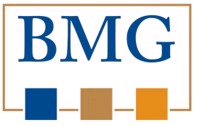| What is a Cafeteria Plan? A cafeteria plan, also known as a Section 125 plan or Flex Plan, is an exciting and extremely popular employee benefit that allows you to pay for your expenses with pre-tax dollars. With the cafeteria plan you are able to choose what amount and to what benefits you would like to contribute. It’s your choice, and that’s where the name “cafeteria plan” comes from – your ability to choose both your benefits and the amount you contribute. Why Should I Participate? This is easy! Every dollar that is run through a cafeteria plan is NOT subject to taxes. Yes, that’s right – no federal or state income tax, no FICA taxes and no Medicare taxes. The gross income on your W2 form at the end of the year will show your salary minus the amount that you elected to deduct through the cafeteria plan. What Benefits Are Available Through A Cafeteria Plan? There are several different benefit options available under a cafeteria plan. They include: Group Medical Premiums, Health Flexible Spending Account, Dependent Flexible Spending Account, and Individual Health Premium Account. You may also participate in the flexible spending accounts. These require direct enrollment on your part. The accounts are: The Health Flexible Spending Account is for out-of-pocket medical expenses that you incur during the plan year. Use the worksheet at the end of this page to estimate how much you spend in eligible health-related expenses each year. You’ll be surprised at how much you really spend when you figure it out. Paying for all these expenses pre-tax instead of after-tax can result in considerable savings over the course of a year. The Dependent Flexible Spending Account is for dependent day care expenses that are necessary for you to work. This includes both care for your dependent children up to age 13, as well as elder care for older dependents that live in your home. One thing to keep in mind for divorced and separated situations; the IRS only considers the custodial parent or guardian (more than 50%) eligible for this account. The Individual Health Premium Account is for any medically related insurance that you have billed to your home. Again, you choose how much you want to participate as you design your own benefit plan. This Sounds too Good to be True! Yes, in some ways it does. However, because this is a plan in which you save taxes, the IRS does have some rules, which you need to keep in mind. One is that all expenses need to follow IRS guidelines to be considered “eligible” for reimbursement. Please refer to the abbreviated list on the back for more information. Also, this benefit can only pay for expenses that you have incurred within the plan year. This means that if you had a service performed in the previous period, but you are paying for it in the new benefit year, it is not an eligible expense. The only exception is orthodontia expenses, as the IRS considers it to be ongoing treatment. It is important that you plan carefully. If for some reason you have money left in your account at the end of the plan year and do not claim it within the run out period, this money is forfeited by you. Whether you're a single person, single parent, part of a dual-income household, or a family person with a non-working spouse, the Cafeteria Plan will provide you with additional benefits, more take-home pay and even allow you to establish and additional retirement plan with your tax free dollars. Single Parents - In the illustration below, the single parent earns $19,200 and has two children. She uses the Cafeteria Plan to pay for medical coverage and to pay for the cost of the medical deductibles and dental care this year. In addition, she has opted to pay her childcare expenses out of her pre-tax dollars. In this way, she increases her take home pay by $109 each month...or $1,308 this year. That is an additional 15% take home pay. Working Couples - Also below, the example husband and wife both work and have two children. The husband makes $27,500 and his wife earns $14,500 per year. They use the Cafeteria Plan to help pay the premium for medical coverage and pay for the orthodontist bills for the children. With both of them working, they also utilize the plan to pay for necessary childcare expenses. The chart shows that this couple increases their monthly take home pay by$220...or $2,640 this year. That gives them additional money for the emergency expenses every family has...and allows them to set some money aside to fund an additional retirement plan! | 